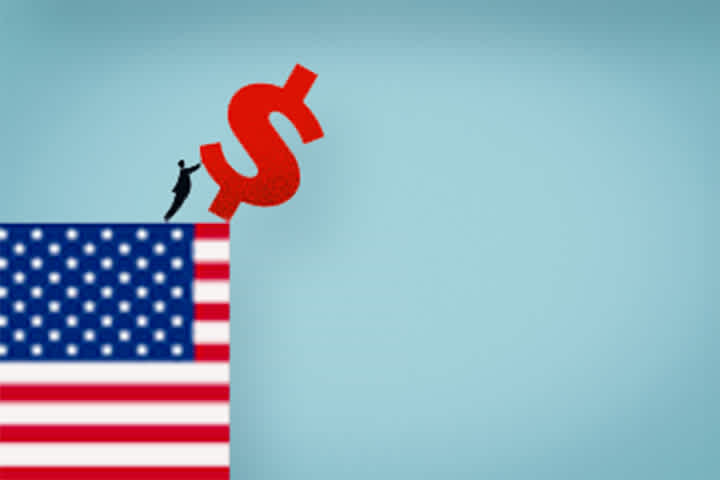Why high dividend yields can be a poisoned chalice
Keytrade Bank
keytradebank.be
June 20, 2024
3 minutes to read
Just like a shiny apple may be hiding a worm, high dividend yields may be a sign of underlying problems. A high dividend may look alluring, but what’s behind this attractive yield?
A decent company pays a decent dividend. Many investors see this stock-market saying as an important part of their strategy. That is because dividend stocks provide a regular income. Rather than save or reinvest all their earnings, companies tend to give their shareholders – the investors – a piece of the pie by paying them dividends.
These dividends or profit distributions are usually paid on a regular basis, for example quarterly or annually. This is particularly beneficial for long-term investors who see them as a reward for their ongoing commitment. Last year, companies distributed no less than 1,660,000,000,000 (1,666 billion) US dollars in dividends worldwide. A nice extra.
What is a 'normal' dividend yield?
Targeted investment in dividend shares can also be interesting for a reason other than income. Companies that consistently pay dividends often have a solid financial position and stable profitability. This makes them more reliable in the eyes of investors,
but can also be deceptive, especially if the dividend yield is (too) high. The dividend yield is the annual dividend that is paid as a percentage of the current share price. Suppose a stock is listed at a price of 25 euros, and the annual dividend is 1 euro. This makes the dividend yield 4%. A dividend yield between 2 and 5% is generally considered good to very good. Dividend yields above 5% and closer to 10% (or even higher) are very generous. Such a high dividend yield is only possible if either the dividend is high or the share price is low. The first possibility is good, the second is not.
Risks of a high dividend yield
At 8, 9 or 10%, some stock dividend yields are difficult to refuse at first sight. However, such dividends do not always mean that those companies' profits are high and that their financial position is robust. It is possible, but actually rather unlikely. An excessive dividend yield is more often a sign of underlying problems.
A high dividend yield could be the result of a significant drop in share price with the dividend remaining at the same level. Suppose a stock is listed at 100 euros and is paying an annual dividend of 5 euros – a dividend yield of 5%. A shock then pushes the share down to 50 euros, which suddenly doubles the dividend yield to 10%. This may indicate market doubts about the company’s future profitability. Investors should therefore be aware of the reasons behind a high dividend yield. It may indicate temporary headwinds or worse: structural problems such as high debt or falling sales.
A dividend policy that is overly generous may also undermine a company’s investment capacity. Companies that pay out a large proportion of their profits as dividends have fewer funds left for debt repayment, innovation and the necessary investment in growth. This may adversely affect their competitive position and financial health in the long term.
Too good to be true
Another risk is that companies in difficulty tend to reduce their dividends or even stop them altogether. This may be an unpleasant surprise for investors who depend on dividends for income. A sudden reduction in dividends may also lead to a further drop in the share price, causing investors to suffer a double loss.
In short, a higher dividend is not always a better dividend. It is important to assess the context and enduring nature of the dividend. Investors should not only look at the level of the dividend yield, but also at the company’s profitability, growth prospects and financial stability. It is how they avoid an attractive return from ultimately turning out to be a poisoned gift. So in the world of investments, if something seems too good to be true, it probably is.
Lower dividends approaching? Some warning signs
• High payout ratio
The payout ratio indicates what percentage of the profit a company pays out in dividends. If a company pays a dividend of 0.5 euros per share on a profit per share of 2.5 euros, the payout ratio is 20%. The lower this ratio, the greater the company's buffer to absorb any setbacks without reducing the dividend. A higher payout ratio may be a bad sign.
• Falling profits and falling free cash flow
Falling profits push up the payout ratio, which puts pressure on the dividend's sustainability. More important, however, is the free cash flow – the money used to pay the dividends. Falling free cash flow also compromises the dividend.
• Borrowing to maintain dividends For some companies, dividends are sacred. They do whatever it takes to keep their shareholders 'satisfied'. Some companies even get into debt to avoid reducing their dividends. This may also be a red flag.
• Weaker balance sheet
A weak balance sheet with high debt levels can pose a major risk. Payments to creditors always come before dividends: bondholders and lenders generally take priority.
• Poor track record
A company's dividend history or track record can be a good way to gauge how reliable a dividend is. Companies that have been paying a stable or growing dividend for years may be able to offer more security than companies that are doing so for the first time. And then again, they may not, because past dividends do not guarantee what will happen in the future.
• Higher dividends than peers
A dividend yield that significantly exceeds the historical or industry average may be a warning sign rather than a signal to buy.
How to invest in stable dividend stocks
Dividend investments can be a gratifying and valuable strategy, but it takes some homework to separate the wheat from the chaff. You can invest in individual shares if you can and want to take the risk. An alternative could be to invest in trackers or funds that focus on stocks with both attractive and consistent dividends. If you choose an actively managed fund, you can be sure that the companies in the portfolio have been carefully selected and monitored.
Want to invest in dividend stocks, trackers or funds?
- Log in to Keytradebank.be on your laptop or desktop
- Click on Advanced at the top of the search window
- Tick Bonds, Tracker and/or Fund
- Use the term dividend to search for trackers and funds


